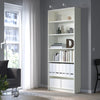Sustainability in the home furnishings industry
January 17, 2023

Sustainability consists of fulfilling the needs of current generations without compromising the needs of future generations, all while maintaining a balance among environmental stewardship, social well-being, human capital and economic growth. Recycling, upcycling, repurposing, making high quality products, using inputs that don't cause harm to the environment and humans, reducing the use of non-renewable natural resources, increasing the use of renewable one, offering education and improved working conditions for employees, and corporate buy back programs are all examples of sustainable practices.
Sales of sustainable furniture have been trending upwards and conditions during the pandemic accelerated the trend. Long lead times and lack of inventory led consumers and interior designers to turn to online resellers of vintage and antique home furnishings and high value furniture. Chairish, 1st Dibs and Sotheby's all reported large increases in sales in 2020 and 2021. Even the sales of grandparents' high quality traditional furniture that nobody had previously wanted exploded on Facebook Yard Sale, Next Door and similar local online platforms. The Cottage and Clutter Core trends that flourished with younger adults during the pandemic led to creative refinishing of these high quality pieces.
Being confined to our dwellings for an extended length of time as the only safe haven from the novel coronavirus certainly forced us to examine home layouts, indoor air quality and ways to mitigate the spread of the virus. Sitting on our furniture and sleeping in our beds led many people to assess the comfort, quality and purity of these items and determine that they needed to upgrade. Wellness became a priority for most people in the early days of learning as we go.
The furniture industry here in The States is one that hasn't undergone huge transformation throughout the decades and centuries other than the transition from regionally made handcrafted pieces to mostly mass produced pieces imported from Asian countries after NAFTA was passed in the 1980's. Then we quickly transitioned during the pandemic from buying these pieces through brick and mortars primarily to buying online from e-commerce only companies (B2C) and omnichannel sellers and shipping directly from Asian factories to distribution centers in The States and then directly to the consumers. Again, we hit a new low threshold in quality, price and delivery experience.
Addressing the environmental problems with fast fashion lead to an acceleration in resale of apparel on-line starting over 10 years ago. Recently apparel brick and mortar retailers have been forced to address sustainability issues due to huge growth in on-line resale. Also, many documentaries such as 2015's 'The True Cost', Greenpeace articles and the media coverage of the Bangladesh fire working conditions were shared with the public. It raised the average consumer's level of awareness, sympathy and desire for fair trade.
Online resale of apparel is easy because most apparel is lightweight, not prone to in-transit damage and doesn't cost much to ship. Moving the apparel all around the country isn't hugely sustainable, but it is way more so than all of the shipping that in involved with designing and producing a new article until it gets to the consumer. Furniture has more challenges.
Discussions about fast furniture and furniture resale are nascent. Resale of home furnishings is becoming mainstream and doesn't have the stigma with consumers that it once had. Just as large apparel retailers developed resale apparel programs, major furniture retailers are evaluating how to capture a piece of the resale business. Challenges exist with keeping large and bulky pieces of conventional furniture out of landfills where they will not decompose due to their synthetic inputs. The further large pieces of furniture have to travel, the higher the likelihood of in-transit damage and the more expensive it is to move.
Sabai is a West Coast upholstered furniture maker that combines recycling, health concerns and component shipping in their collections. Filling is recycled, upholstery fabrics are from recycled polyester, frames are solid hardwood, the cushion foam is free of flame retardants and they have a furniture repair and buy back program. The pieces are shipped in components and require easy assembly. This lowers shipping cost and potential in-transit damages. Nice job. I find it a bit contradictory to use solid hardwood frames and petroleum based fillings and fabrics, but they are recycled and this is a great example of closed loop manufacturing or circularity .
Even Ikea, pioneer of cleverly designed inexpensive made-to-assemble furniture that cannot withstand a lengthy move and costs more to move than its value, now has a buy back program in place. Like H&M, the same companies that contributed to the problem are having to adopt programs to, if not stop churning out crap, try to mitigate the impact of mounting piles of non-biodegradable furniture.
Let's use Ikea's program as an example. If you read the Ikea program terms and conditions, it includes only five large storage and shelving units that have to be returned fully assembled in near perfect condition. Only certain stores participate and if it sells then you receive a store credit to buy new Ikea items. Many people who buy Ikea furniture are students in cities and they don't even own vehicles. How can a person who relies on public transportation bring an assembled 80" tall x 31" wide bookshelf that retailed at $90 back to a participating store using Uber or public transportation? Reselling it locally on Facebook or Nextdoor for $30 makes more sense to me. Nobody is going to move a $90 retail particle board assembled Billy bookcase 600 miles away either because it costs more to move than to sell it locally and buy another. It isn't designed to withstand a major relocation. Just resell it locally and if it doesn't sell then donate it or give it to someone who truly will use it. Ikea had to launch Ikea Buy Back and Resell. It's not an inclusive program, but it does make Ikea look more responsible as companies strive to define their contribution to sustainability.
Ikea actually has one of the most stringent and extensive list of prohibited chemicals in their products than other makers at similar and much higher retails. They have always had a safer chemicals policy and phased out PFAS in 2016 while others are just now addressing them. They should be sharing this with the world before the limited Buy Back and Resell.
Resale is growing the fastest in home furnishing. Online home furnishings resale listings grew 86% in 2022 according to Chairish's 2022 annual resale report. The most popular searched brands last year were Baker, Henredon, Ethan Allen and Ralph Lauren. Just as with apparel resale, it shows that people are hoping to acquire high quality furniture that might not have been within their means new. It is very interesting that these legacy brands aren't trend driven either.
On-line furniture resale platforms such as 1St Dibs, AptDeco, Sotheby's, Kaiyo and Chairish typically to have more unique and higher quality items than Craigslist, Facebook Yardsale and NextDoor. Plus, these platforms handle the logistics of transporting the furniture. Most consumers don't know how to coordinate the transport of a large and heavy dining table or sofa that needs insurance if there are any in transit damages.
The latter platforms don't have anyone handling logistics because they are just listing boards. Transport can be a deal breaker when trying to sell and buy through Facebook or Craigslist. Also, many large furniture items have low values due to low quality and their condition after a few years, so paying a professional mover can be prohibitive. This dilemma for the offloading consumer is often resolved by moving sofas and mattresses on sidewalks with the hope that someone will take them or trash collection will, even if the city or town requires purchasing a bulk removal sticker and it wasn't purchased. (Who actually enforces this on behalf of municipalities?) Nobody wants a shoddily made used sofa that has lost all of its support and the upholstery fabric is dirty. After one day outside with precipitation, it is akin to plutonium.
On-line home furnishings reselling of antique, vintage, unique and high quality items has huge growth potential and is truly sustainable and circular. With the aging Baby Boomer population downsizing, there are oodles of high quality home furnishings becoming available. If it weren't so expensive and risky to have retail space, more brick and mortars selling used large home furnishings would exist. It , also, requires much more floor space than apparel does. So, on-line is flourishing. Just about every auction house learned during the pandemic that it could successfully move to an on-line format and many have stayed as such.
Regional furniture production made sense 100 years ago because people tended to move far less frequently, bought high quality furniture, valued furniture as an investment and it wasn't as trend driven as it now is. If we return to embracing furniture for its quality, longevity, function and craftsmanship then we can slow the devastation to the health of every living organism. This alone will not reverse the collapse of all of our ecosystems. However, every mindful and conscientious decision can have a cumulative impact and drive makers to respond to consumer behavior in this data driven age. The ever widening income gap does allows for this on the upper end, but certainly not for lower income earners. However, buying resale through local online posting platforms is a great option for people who have a leaner budget. Buying resale typically allows a person to buy something that he or she wouldn't have been able to afford new.
Expect huge growth in the home furnishings resale sector of the market. The companies with the best logistics teams who are able execute the swift and peaceful transition of parlor from seller to buyer should thrive. I expect that for large and bulky pieces, the industry will eventually become more regionalized due to ever escalating shipping costs and in-transit damages. It is a win for sustainable (and fun) commerce.
Leave a comment




